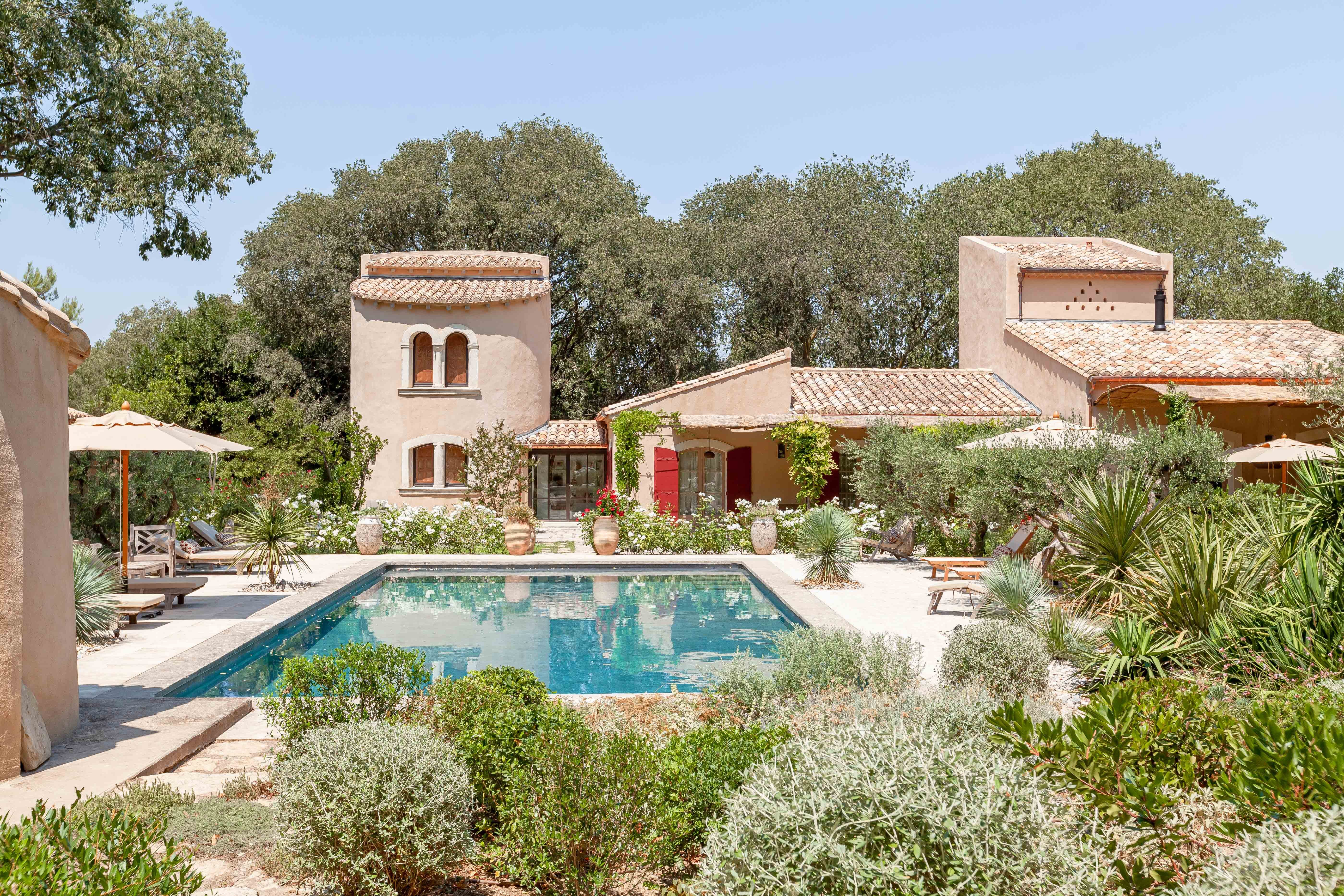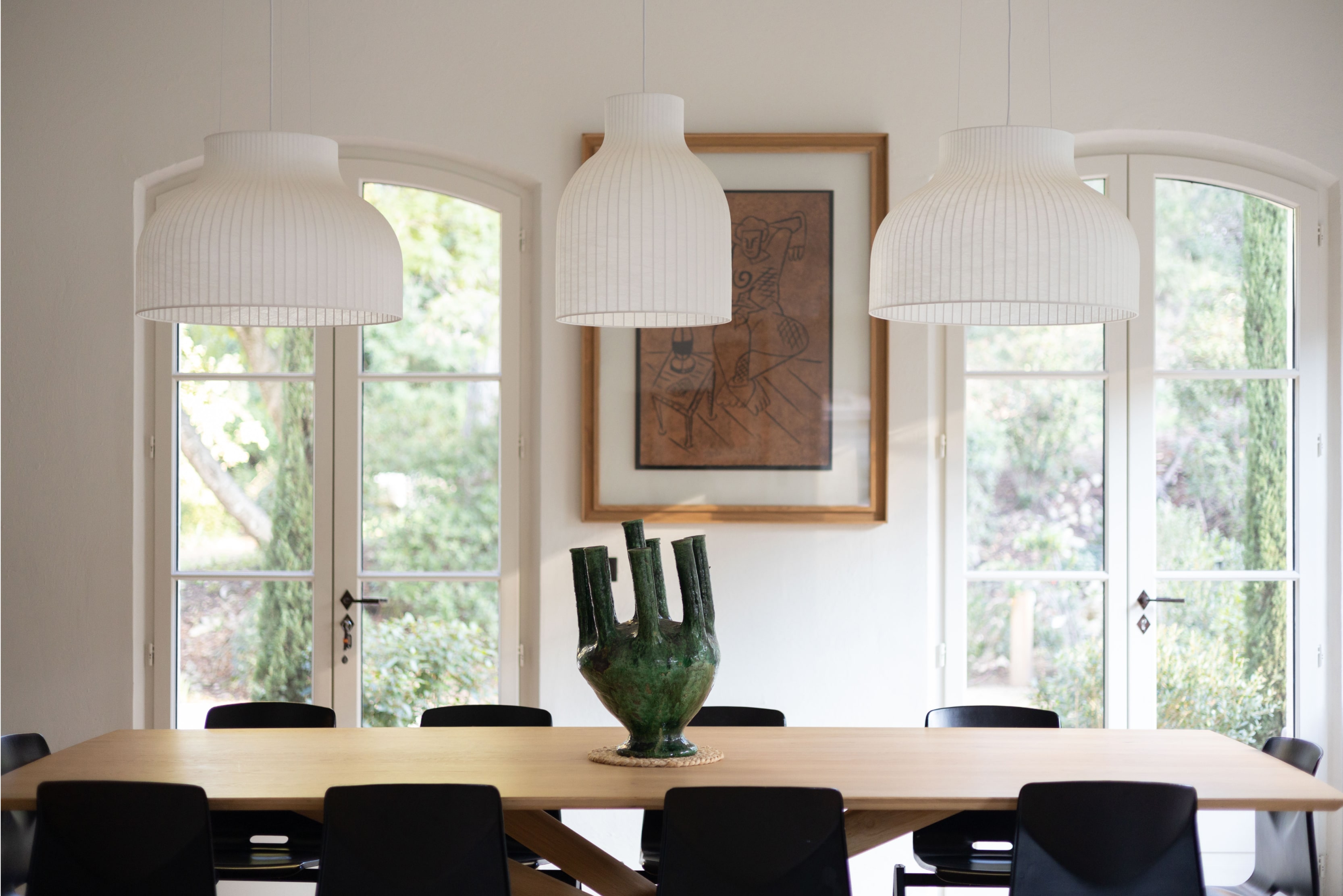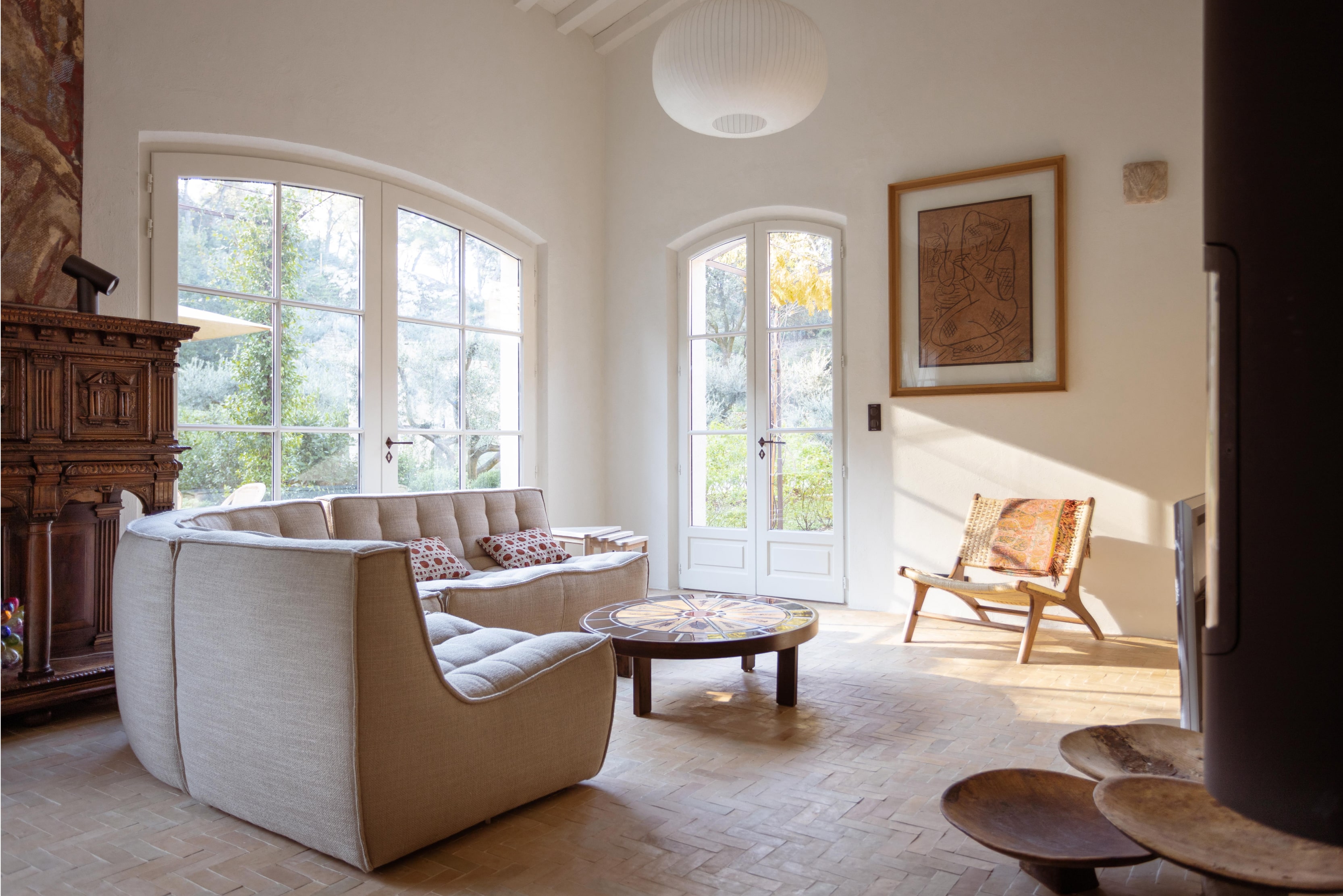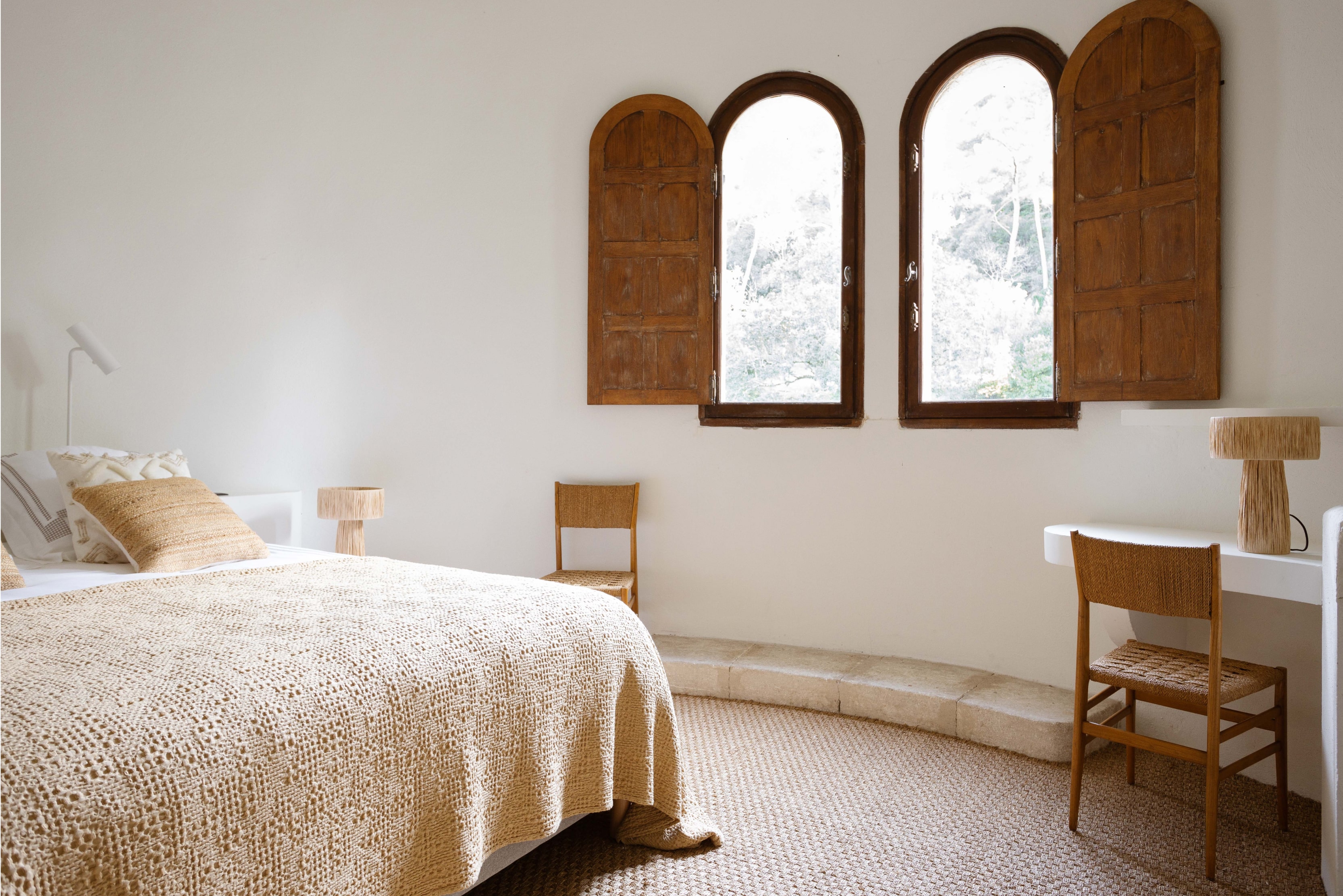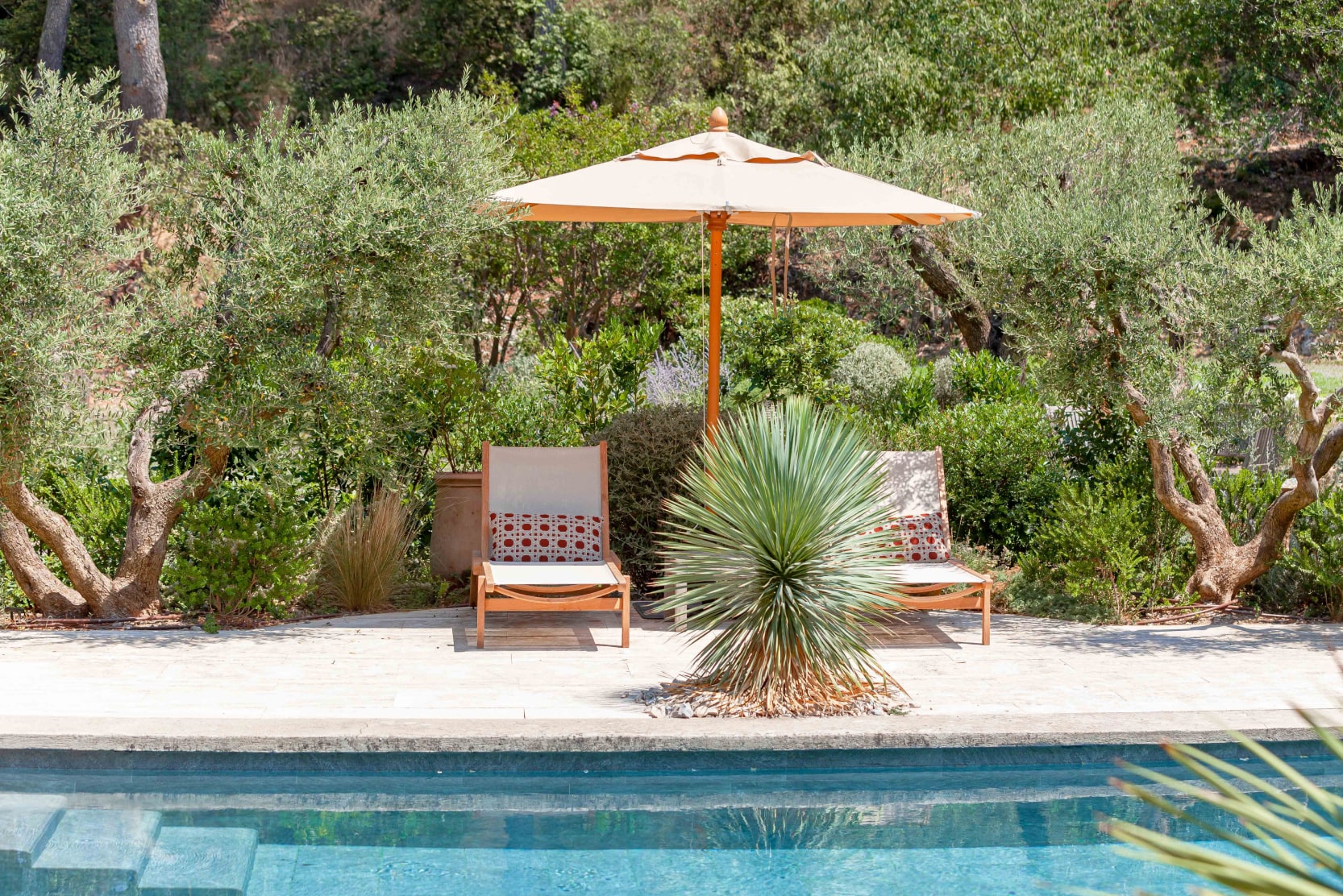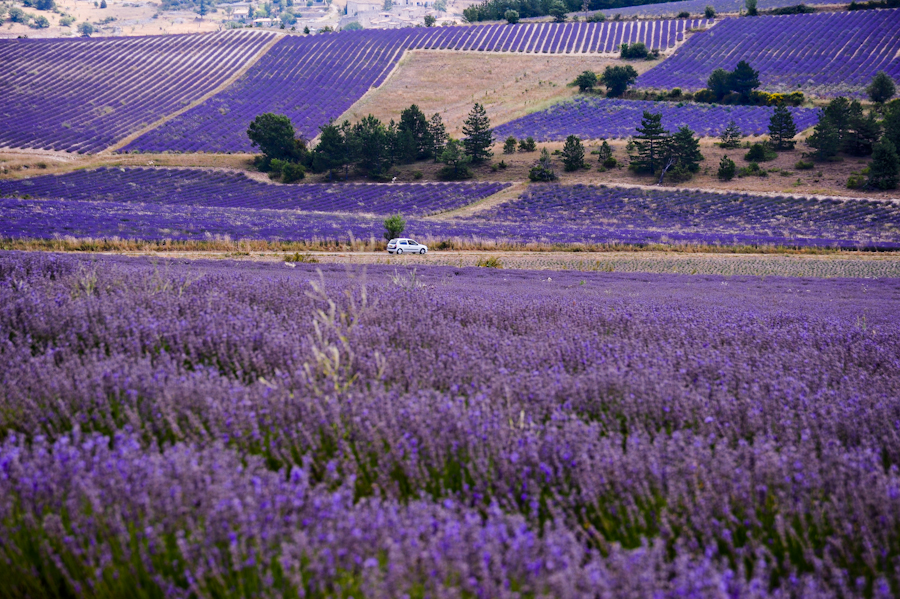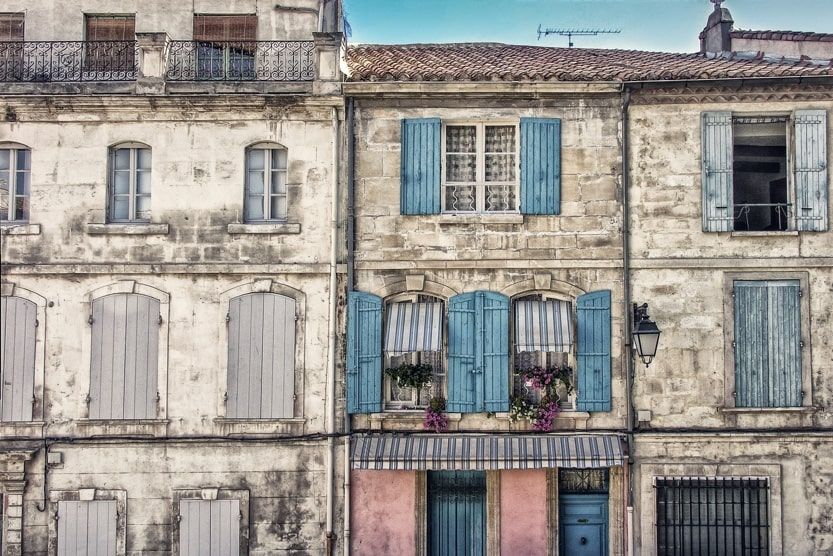Interview with Jean Bosc at Mas de la Tour
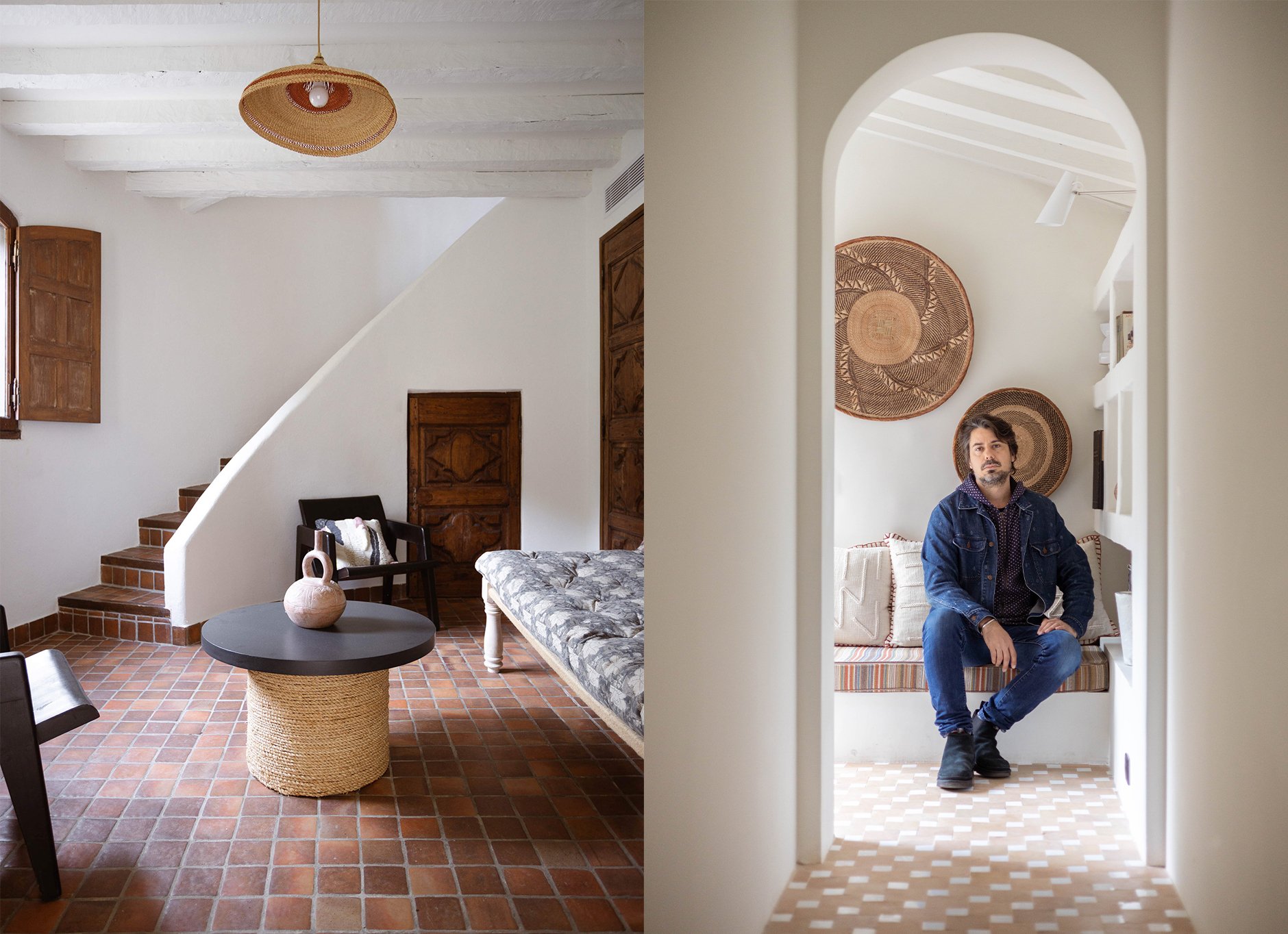
Set sail for the south of France to discover Provence as it pulses in beat with cicada songs and vibrates under the summer sun. Known for its enchanting landscapes which alternate rolling vineyards, olive groves, and sea views, this mythical region also conceals another jewel: traditional houses with southern accents known as Mas.
See our devoted guide to the most unique things to do in Provence.
AN ARCHITECT WITH A PASSION FOR OLD STONES
Jean Bosc, an architect renowned for his spectacular renovations and environmentally conscious creations, is a great lover of this exceptional heritage. He transformed an old hayloft into a remarkable home for its owners in want of open spaces and a breath of fresh air, bringing Mas de la Tour into the world.
Together, they restored this old stone home to its bygone glory, using natural materials and rare, carefully-sourced furniture. We met with this impassioned professional so he could guide us through the human adventure that led to this haven of peace and reveal its secrets to us.
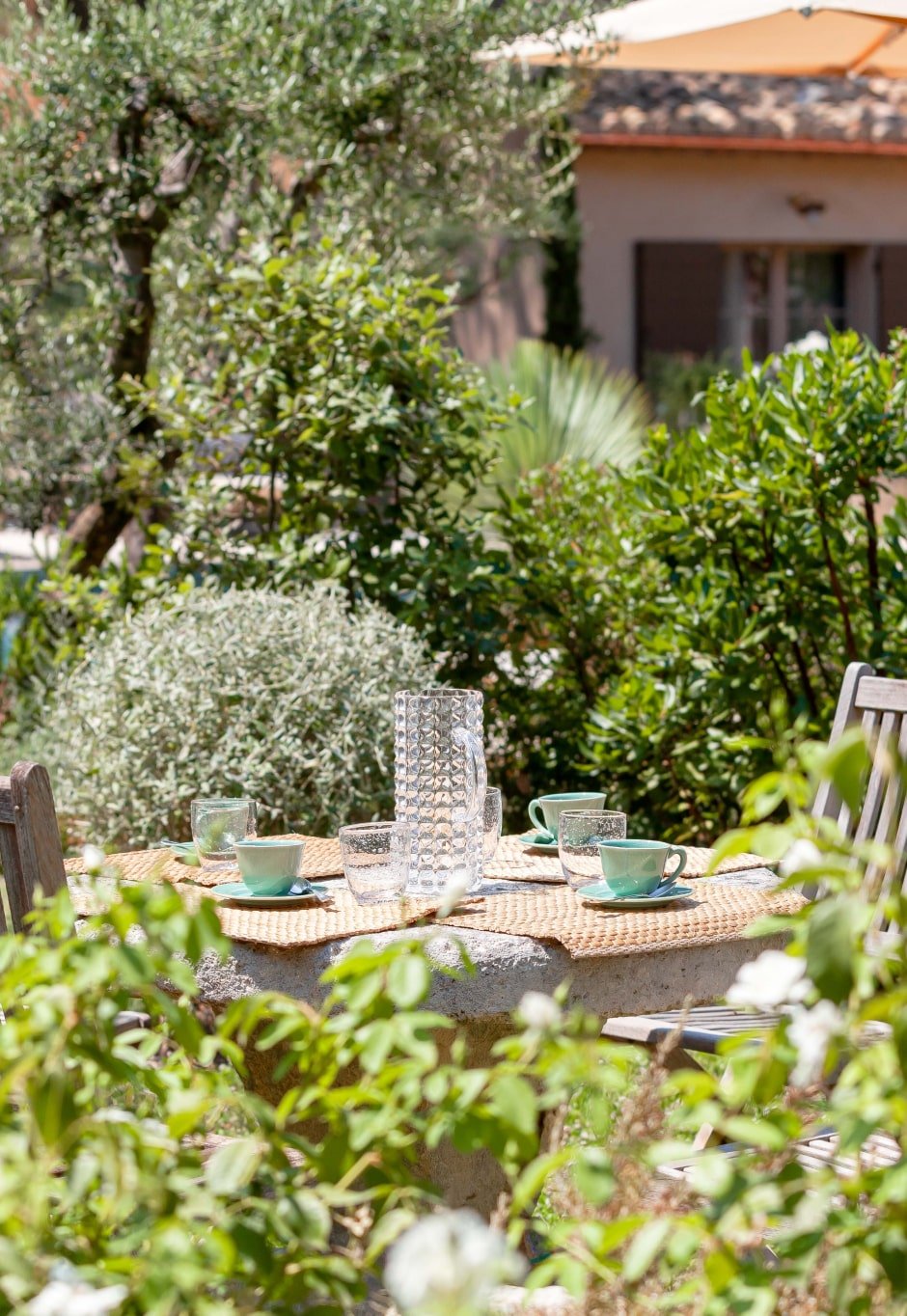
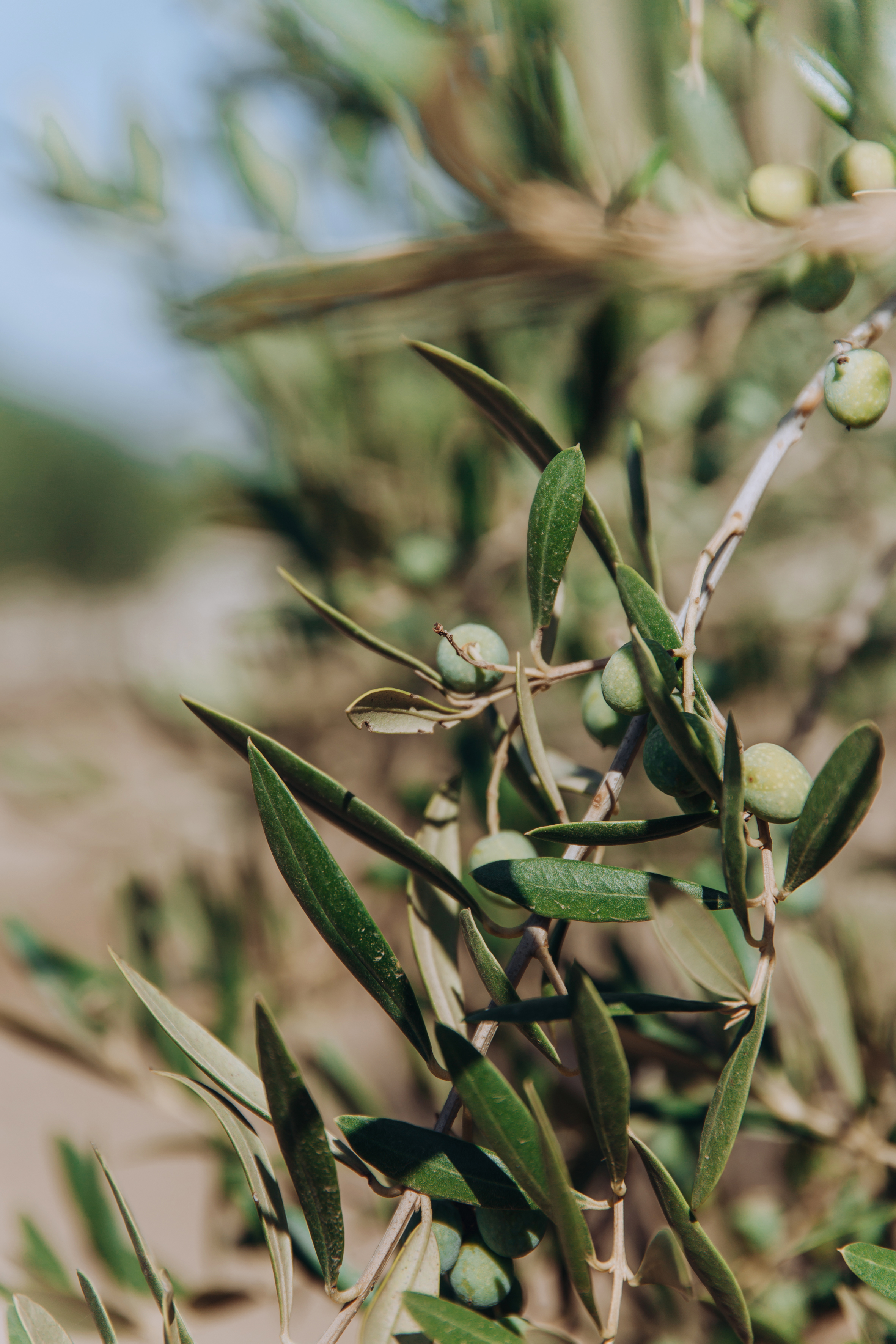
Graduate of the world-famous Penninghen school, Jean Bosc has always considered renovations to be a family affair. Lulled throughout their childhoods by the love of old buildings, he and his brother chose to follow in their father’s footsteps and safeguard one of our most precious treasures: history.
A true enthusiast, his architectural exploits unfurl like odysseys where the cardinal point to follow is respect for the land, materials, and traditions. Committed to defending each location’s soul, Jean Bosc practises an economy of retrieval: discarded tiles, beams, and old doors are granted a second life. His ecological constructions marked by typical craftsmanship imbue some modernity among the cypress trees while honouring the Provençal magic.
See our full guide of things to do in Provence. There, you'll find youthful mementos in our most beautiful villas to relive your childhood memories.
A NEW LIFE AMONG THE ART
Hidden among the pines in Saint-Rémy-de-Provence, the exceptional Mas de la Tour soothes with its gentle holiday air. Its adobe facade and surprising architecture, which blends aligned turrets and mullioned windows, plunge you into the mysteries of this old castle-like hayloft.
Here, the style is simple, elegant, and graphic, as carried by the home’s golden walls and soft curves. With nods to Art Deco and modernist styles, this tranquil haven marries geometric shapes, sculpted spaces, fluid lines, and natural materials.
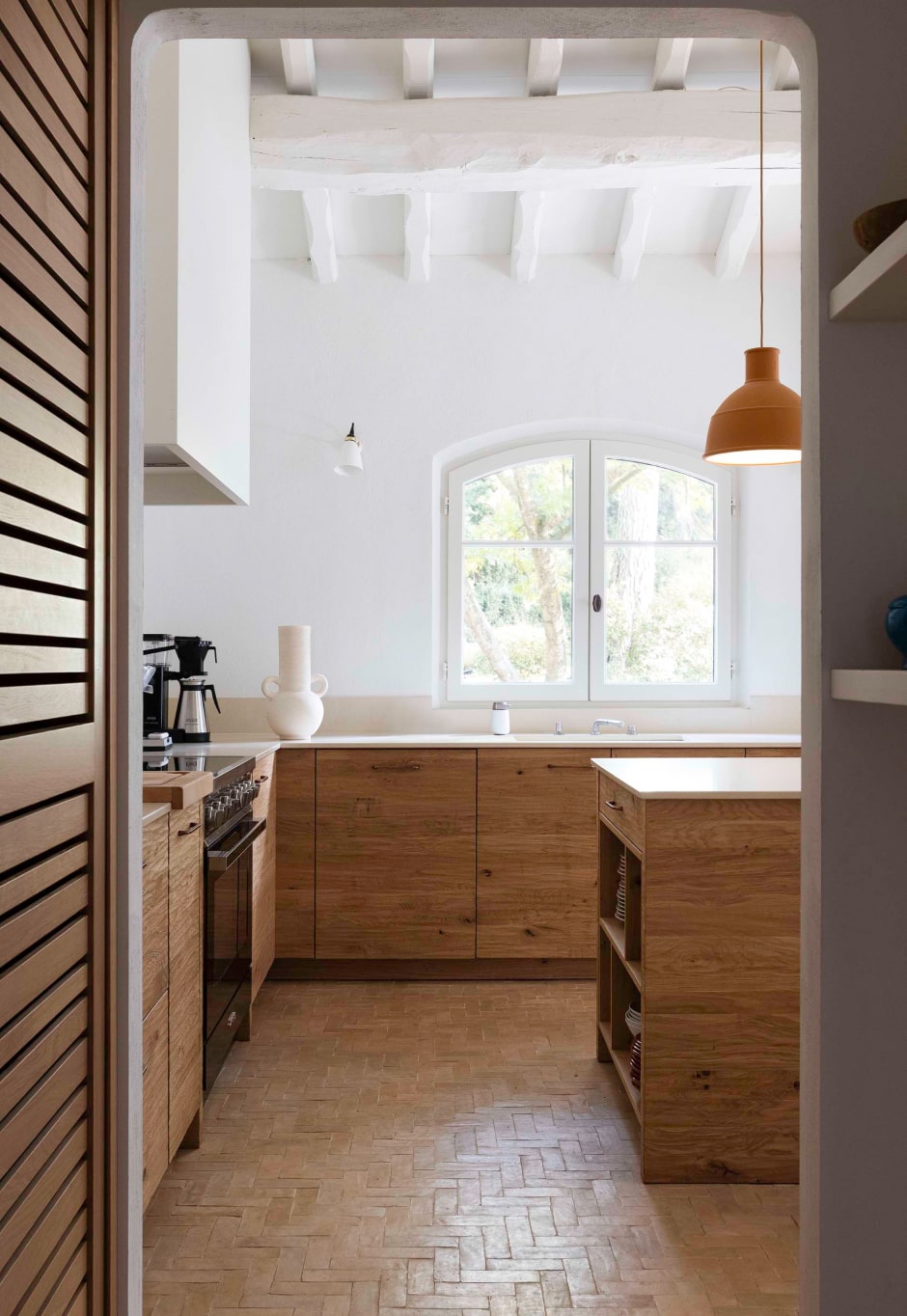

Jean Bosc’s imagined layout was specifically designed to appropriate the old building’s many perspectives, including the seemingly monastic corridor, which links the villa and its turret with an almost sacred atmosphere, and the rounded staircase, typical of ‘70s Provence.
“In weaving our inspirations together, we transformed this Mas into a lived-in sculpture.”
The curved and undulating paths that so characterise the Mas seep into the interior design. The owners played with light and perspectives through furnishings that exude serenity and tenderness. Between rounded angles on the sofa, tables, and in lighting figures and natural materials like sisal and wood, hints of Provence permeate the home.
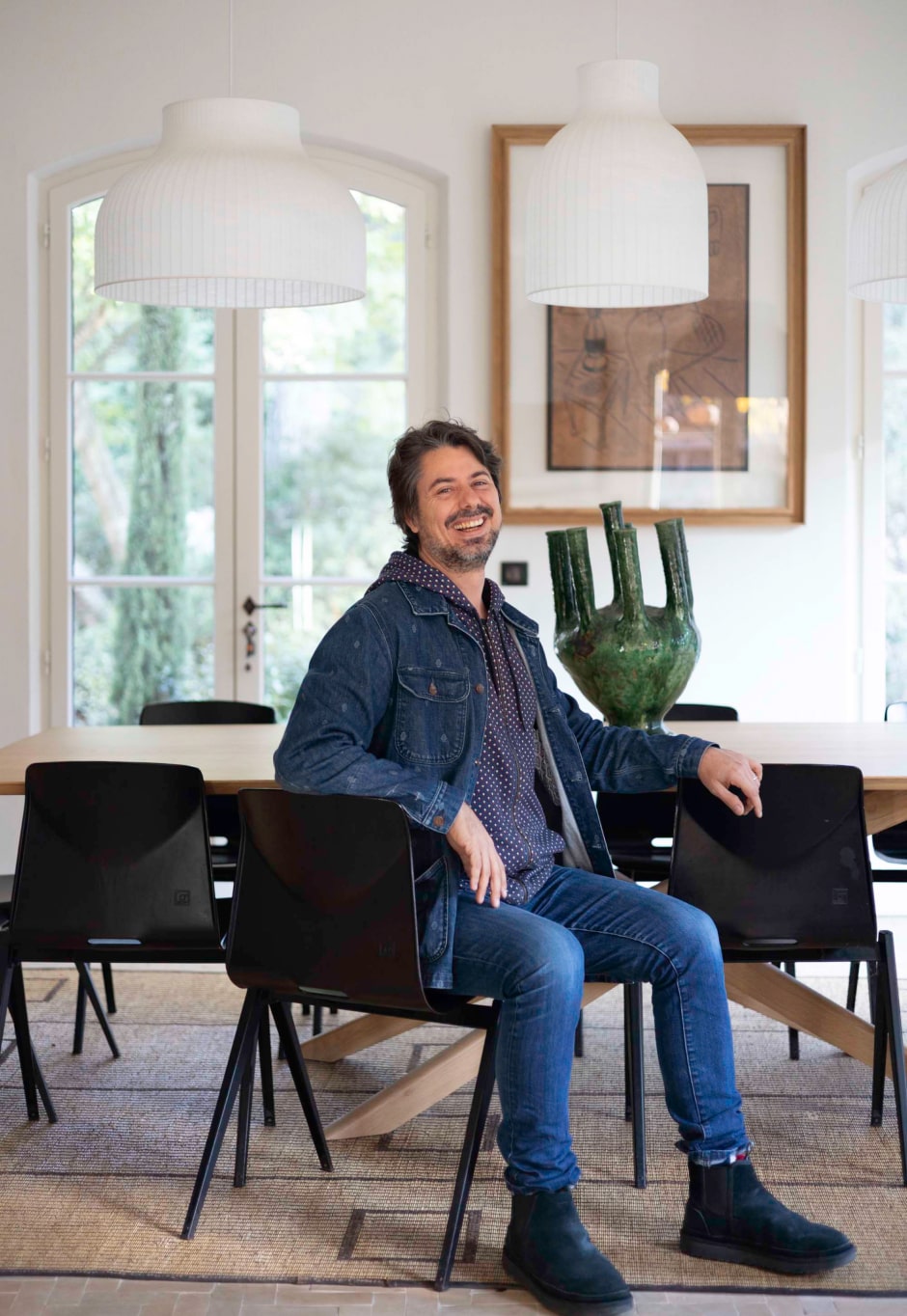
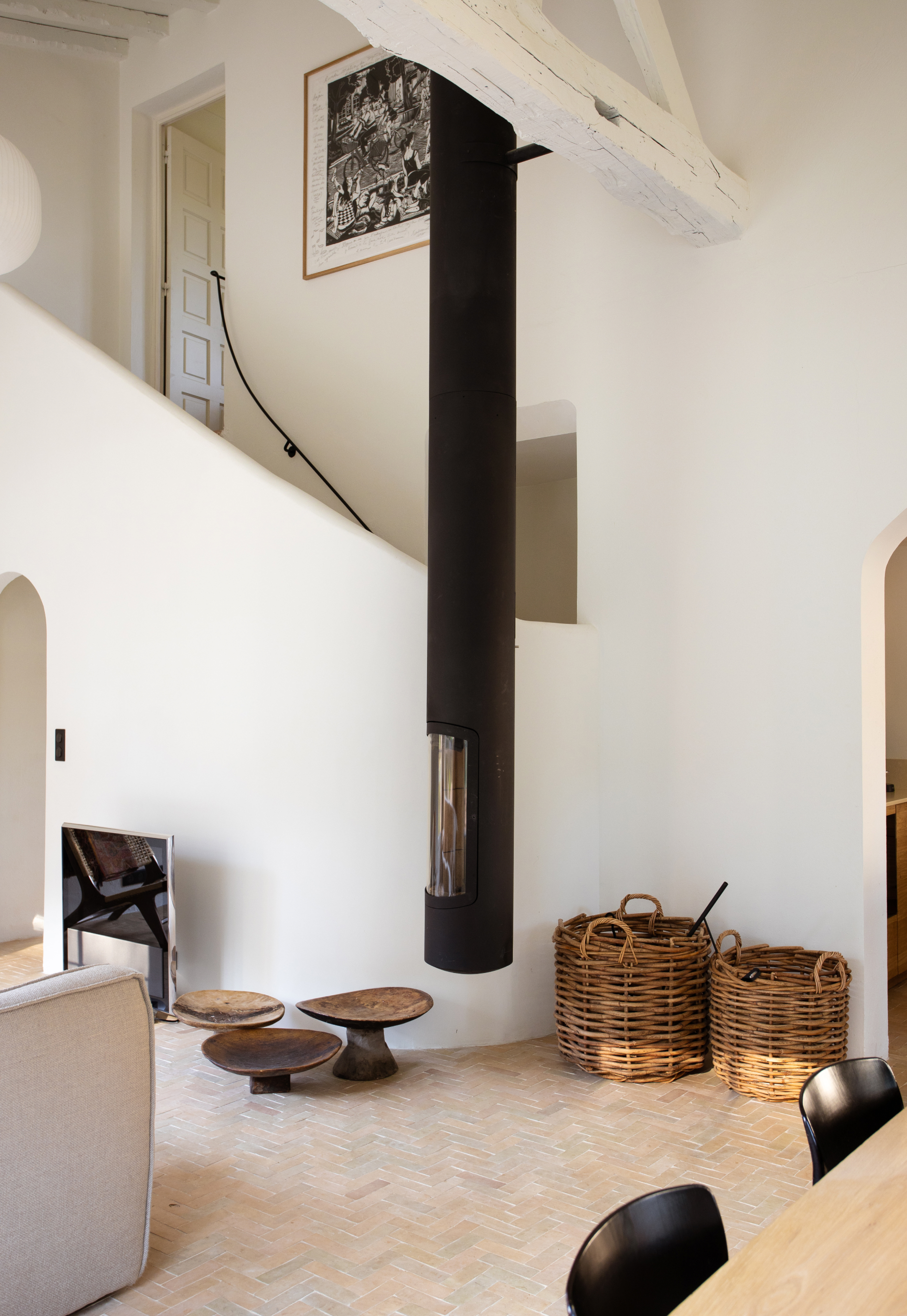
Its sinuous curves invite you to get lost in order to find yourself. We particularly love the zellige, a handmade Moroccan mosaic tiling which dresses the bastide’s floors in many warm variations. Like a magnificent rug that beams under the sun’s rays, the pearly white zellige cabochons bring light to balance the terracotta.
After a careful hunt for the perfect furniture, the owners finally found what they were after in local Provençal shops like Ethnicraft, which helped them create a cosy yet refined interior fitting modernity and tradition in harmony. Ochre linen bed sheets, wicker storage baskets, and a facade in natural hues with red shutters: it doesn’t get more southern than this.
Already planning your next Provence holidays? Peruse our selection of the most beautiful rental Provence villas and sift through our list of the best restaurants in Provence!
“By salvaging pieces, we can get a contemporary style using local and sometimes thousand-year-old techniques. Beams, flooring, tiles: anything can be of interest to us.”
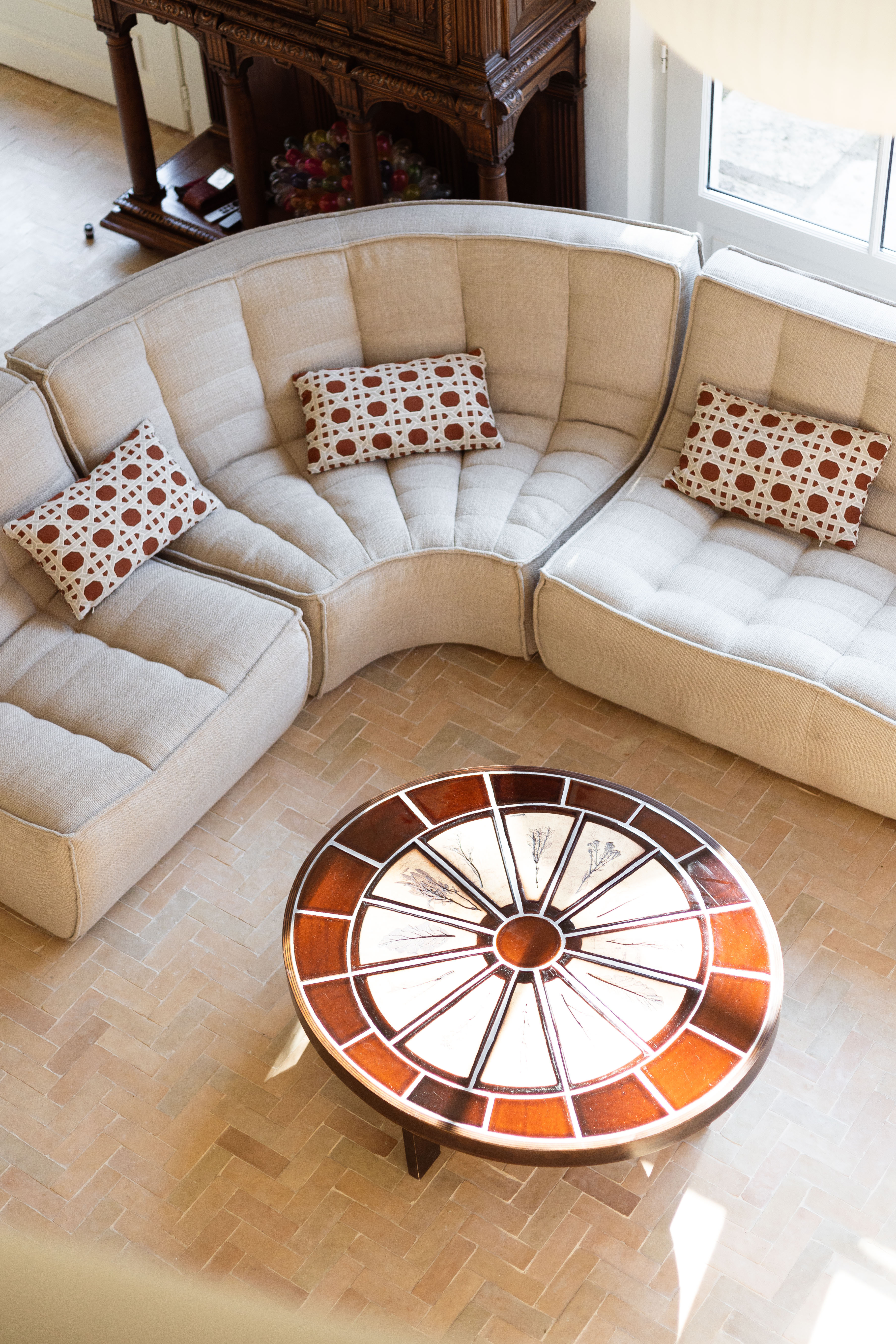
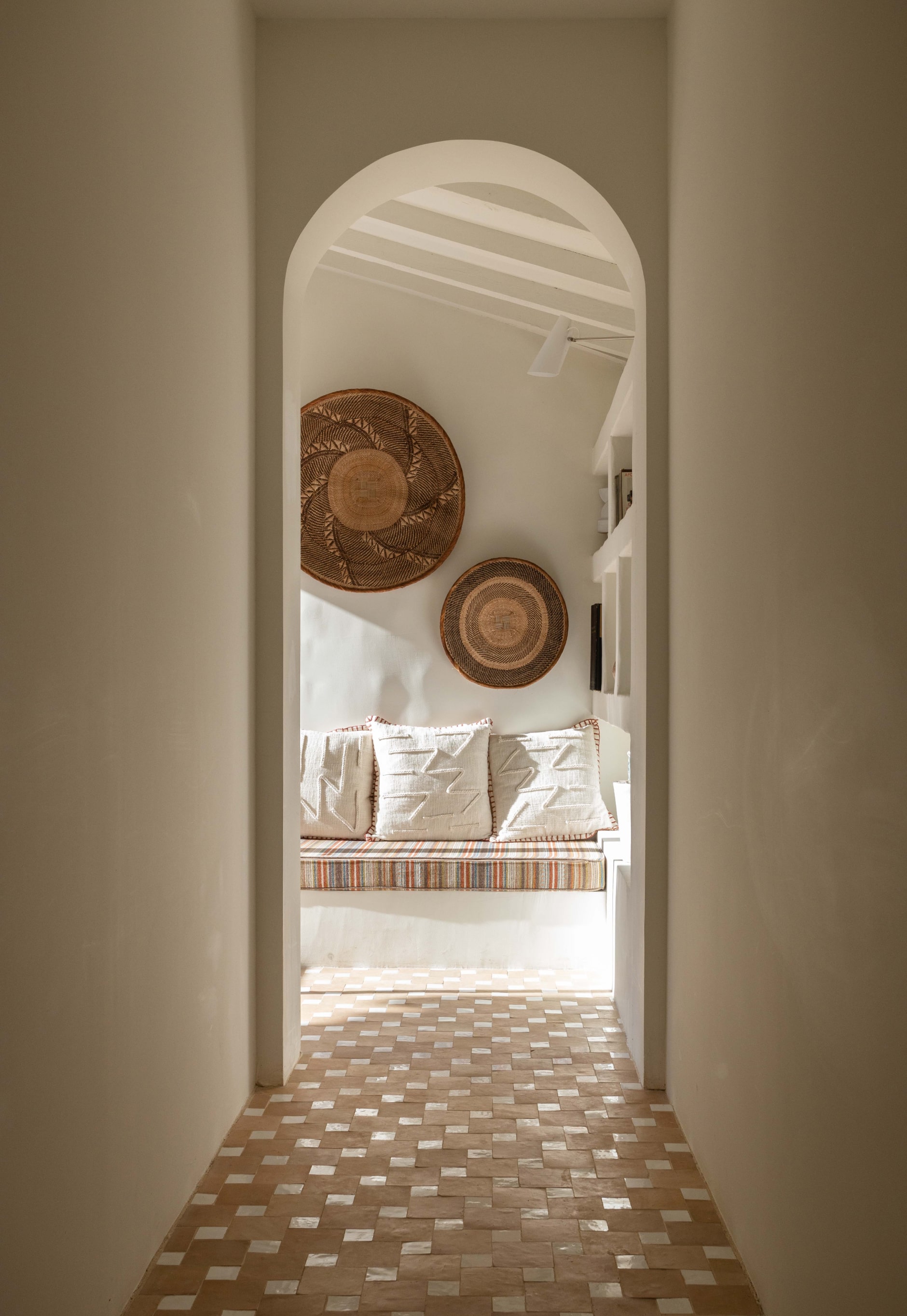
Everything in this home has been intentionally designed and made to measure, largely by Jean Bosc himself, who is proud to use ancestral know-how and techniques. The kitchen is a perfect example: traditional terracotta floors and immaculate white walls trim the beautiful space’s beams and curves. Lightly brushed, the raw oak wood blends perfectly with the kitchen’s zellige backsplash and gives the room its strong identity as it arches open to the dining room.
At Mas de la Tour, each room has its own identity lending undeniable charm, but the architect confides that he particularly likes the monastic corridor on the first floor which leads to a small library. Settle on the plush bench surrounded by textured plaster tile shelves and get swept away by your favourite novel while you admire the extraordinary view of the olive trees through the great bay window.

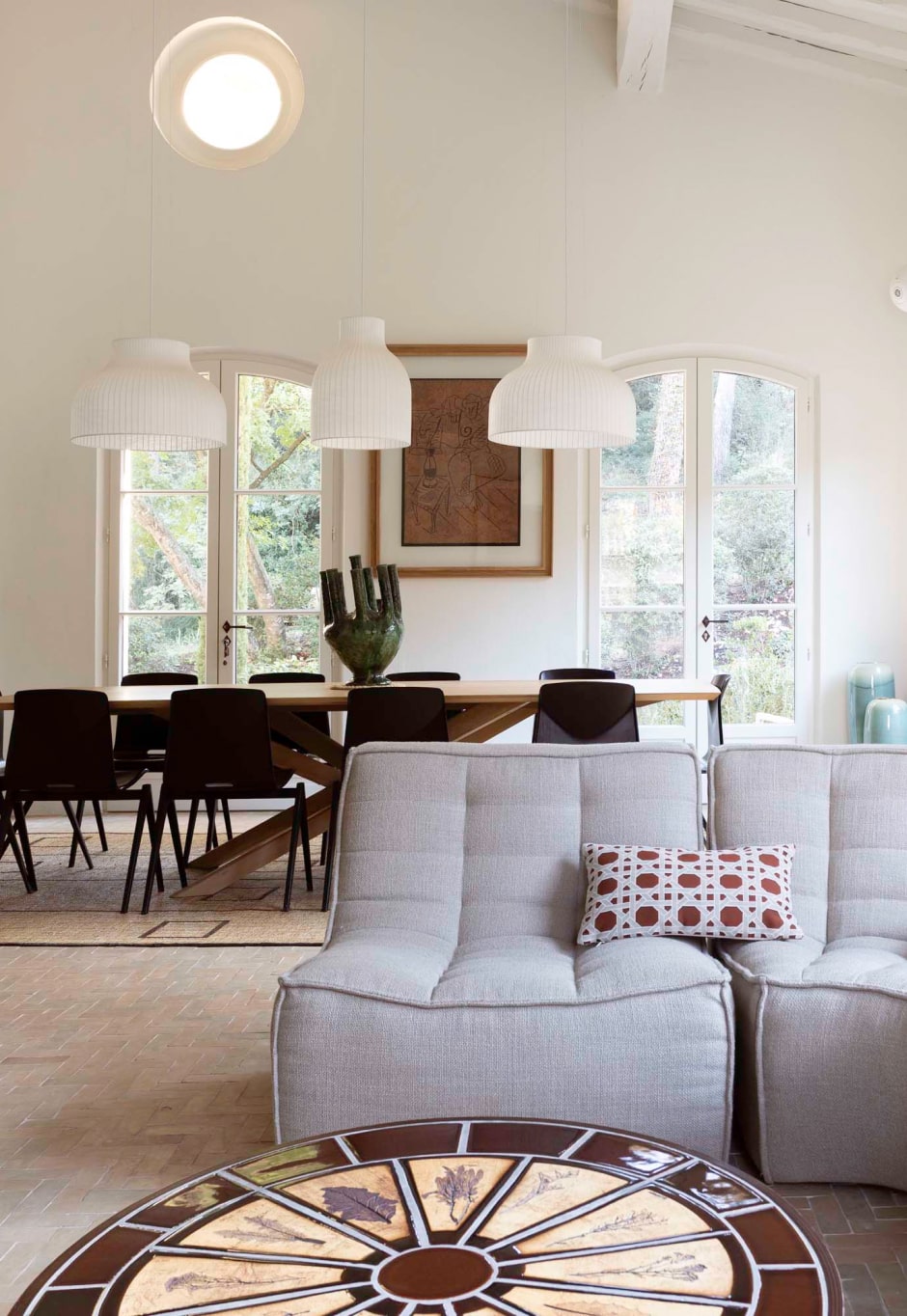
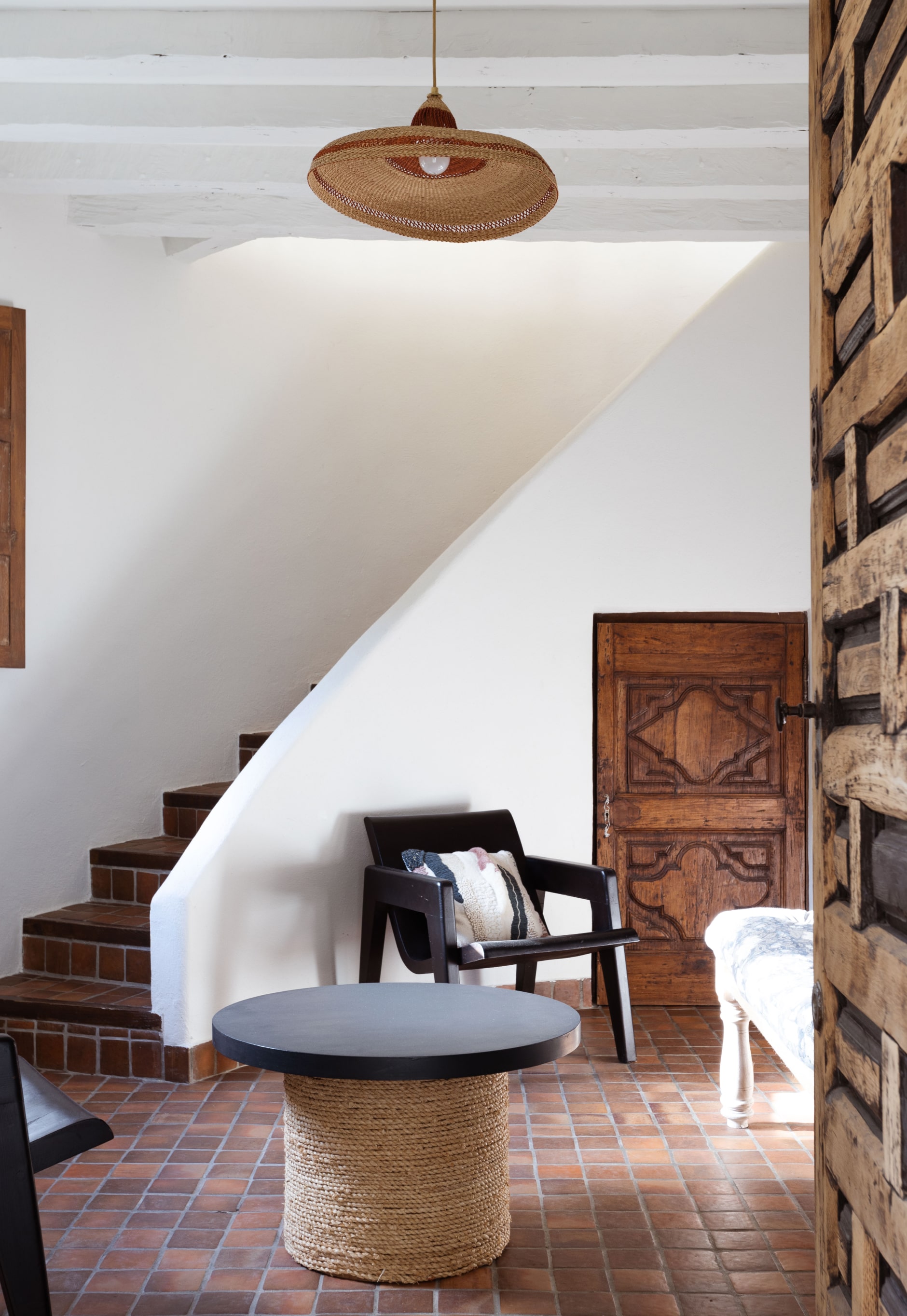
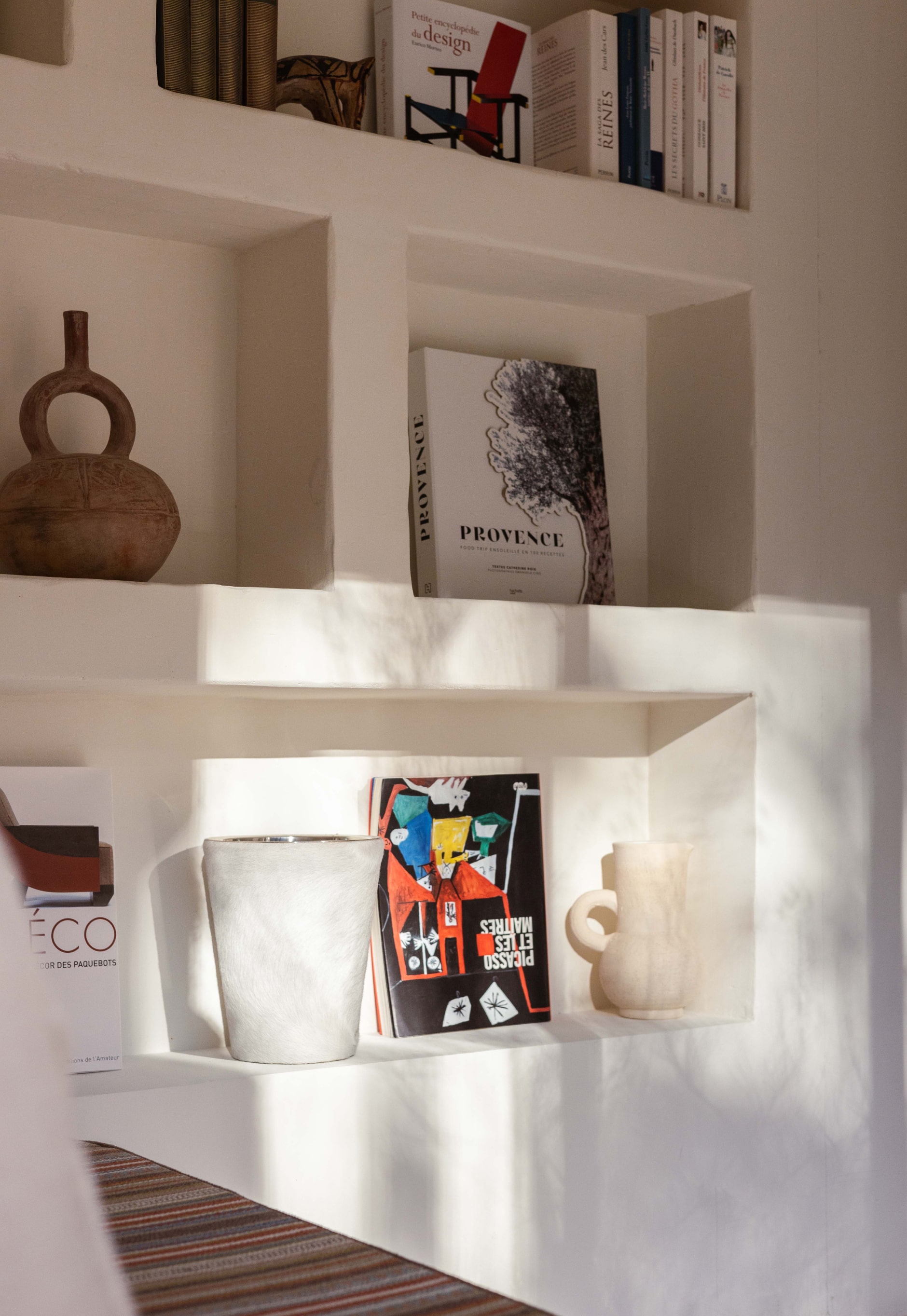
A MEDITERRANEAN MAZE
The owners were keen to preserve Mas de la Tour’s authentic style, though they didn’t shy away from restructuring its design, always in a graphic spirit. Their driving goal was to not sacrifice its Provençal identity, carried by low, sloped roofs, an ochre facade, its south-facing orientation, and the rugged beauty of its Mediterranean vegetation.
Perfectly adapted to its environment, the garden was reworked ecologically to flourish despite the dry climate, with care to avoid excessive water consumption.Our favourite thing to do in these gardens? Enjoy an enchanting walk through a bed of succulents and southern ground-cover plants in a mysterious and mystical atmosphere. You can gladly get lost in the pine forest, concealing treasures like exotic cacti and palm trees planted in structured beds.
If you want to walk a little further, take a colourful stroll through Provence's flowers and fields, or even road trip through the lavender fields.
With plenty of hidden nooks and crannies, let the garden lead you through a romantic maze of fountains and lagerstroemia — magnificent trees with violet flowers — to a mineral terrace where you can savour your morning coffee. Will you be able to spot the traces of an ancient Roman aqueduct that cross the garden, following the little stream running through the property?
By transforming this seventies-era hayloft into an extraordinary contemporary holiday escape, Jean Bosc succeeded in his challenge of giving a second life to this traditional Mas. Through a collaboration between a couple that loves old stones and a passionate architect, this joyful family home was shaped to celebrate Provençal art de vivre.
Photographs by Aurélien Cubeddu.


 | FR
| FR

